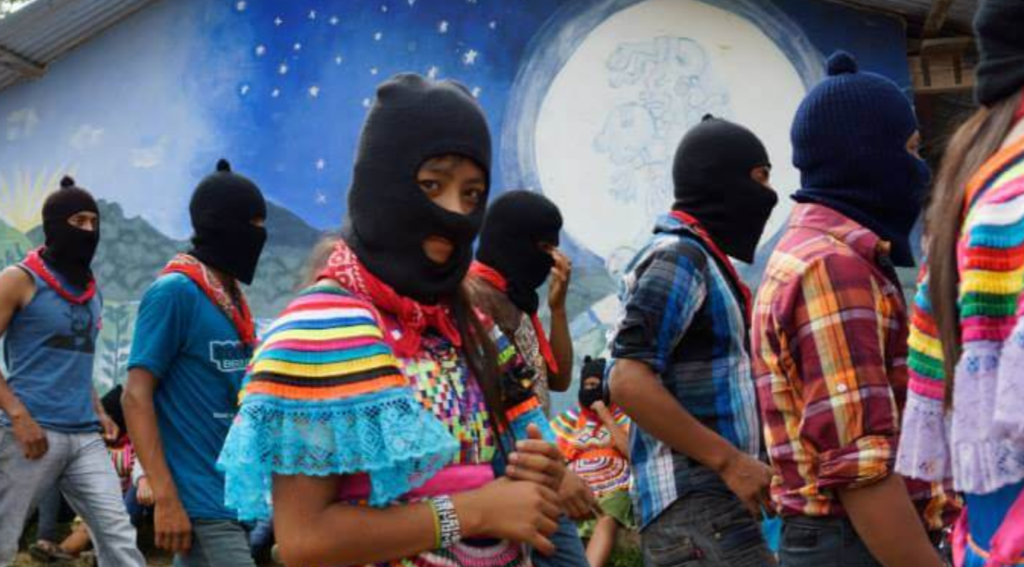
Magdalena Gomez
I take up this question, to engage in an imaginary dialogue, but in reverse, toward those who have posed it in order to discredit any criticism or dissent directed at projects of the current federal government. The atmosphere of dismissal that prevails in the country is not conducive to what they call democracy, which is intrinsically linked to the electoral space in a reductionist way.
There are, however, other necessary questions that deserve reflection. One, which I will ask in good faith, will be: and you, where were you when the indigenous peoples were fighting? To provide an answer, one will have to recognize that society as a whole and the political class, of all its acronyms, have not incorporated this dimension into their respective national projects, which is not exclusive to Mexico; it is especially prevalent in all Latin American countries with indigenous peoples.
Pluralism has been seen as a threat, the legal doctrine of monism has been imposed: each country, with only one people. And it is worth noting that this position, in our case, transcends the past six years, its rulers, and even society. Some have used a rhetorical and reactive appeal with the commonplace theme of the “historical debt,” recognizing that they are originary peoples, which they have tried to “pay” with folklore, insufficient and various economic supports to combat extreme poverty, they have said, which is now focused on the people who are part of the communities.
We are well aware that in the last decades, for the sake of so-called development, the government has given way to projects directed against the territories of the peoples. Not to mention those that are currently underway. That is where the emergency and the struggle against dispossession has been sparked. It is unavoidable to resort to the example of Zapatismo, without a doubt it is not the same as from 1994 to 1996. In those public beginnings a civil conscience seemed to emerge that led to the coining of the phrase “we are all Indians.” Perhaps those who were there and are no longer there remember it because it has been their silent decision, when after that the “fashionable” trend faded away, we saw it later.
From political correctness they gradually moved on to a realistic vision; they said that first they had to win elections and better if it was the Presidency of the Republic. As the years went by, the EZLN concentrated on the organization in its territories and thus made it known that it already had good government councils, in fact it made the autonomy it demanded from the State a reality and was agreed upon in the San Andres Accords, which they (the Congress) later, in 2001, adjusted to accomodate “legal technicalities” and voided its content; 22 years later there are no realistic signs of a constitutional reconsideration, although there are those who hope for it, it must be said, not the Zapatistas, not the National Indigenous Congress.
That said, it is clear that the indigenous Zapatista path was marked by organization, the struggle to stop the many faces of dispossession; not always successfully, we know. The current phase places our gaze on anti-capitalism beyond our borders, in order to unite with the peoples who face similar challenges. It is not in vain that they point out at this stage that the struggle is for life.
On the other hand, it should be noted that the collective struggle of the peoples does not imply that the situation of its individual members is exempt from dynamics and processes that maintain hegemony in all societies. This is the case of patriarchy. It is a hegemony that is based on a social construction around gender that affects almost all indigenous and non-indigenous women.
The Zapatistas have also realized the need for autonomy to not omit the anti-patriarchal dimension. They did it from the beginning with the revolutionary women’s law, and there are advances with new practices and significant international meetings.
Until today, in general, women’s movements do not take into account the complexity that belonging to a people and the gender factor entails for indigenous women. In this case, they raise their demands and claim their rights, not to go against their culture or their people, but to think about custom from a perspective that includes them and does not violate them. In the last 20 years, they have built favorable spaces for the vindication of their demands as women. Many of them are similar to the generic demands of all women, but others question, from within their communities, conceptions and practices endorsed by the so-called costumbre (custom). An example of this is the marriages agreed at early ages and against their will, where a legal prohibition will only be the beginning of a process that gives substance to their own slogan: custom is good when it respects women. Having said that: And you? What are you doing from your spaces and conditions to push a pluricultural country that respects autonomy and stops the abuses against the indigenous peoples in the name of the so-called development?
This articla was published in La Jornada on February 28th, 2023. https://www.jornada.com.mx/2023/02/28/opinion/018a1pol
English translation by Schools for Chiapas.
